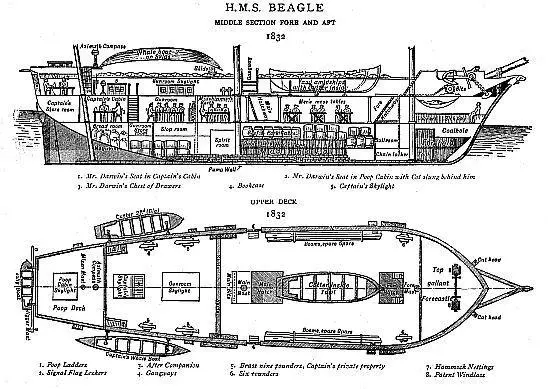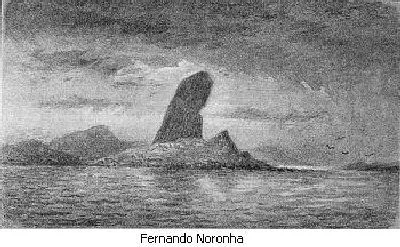Gould; of the Fish, by the Reverend L. Jenyns; and of the Reptiles, by Mr. Bell. I have appended to the descriptions of each species an account of its habits and range. These works, which I owe to the high talents and disinterested zeal of the above distinguished authors, could not have been undertaken had it not been for the liberality of the Lords Commissioners of Her Majesty's Treasury, who, through the representation of the Right Honourable the Chancellor of the Exchequer, have been pleased to grant a sum of one thousand pounds towards defraying part of the expenses of publication.
I have myself published separate volumes on the Structure and Distribution of Coral Reefs; on the Volcanic Islands visited during the Voyage of the Beagle; and on the Geology of South America. The sixth volume of the Geological Transactions contains two papers of mine on the Erratic Boulders and Volcanic Phenomena of South America. Messrs. Waterhouse, Walker, Newman, and White, have published several able papers on the Insects which were collected, and I trust that many others will hereafter follow. The plants from the southern parts of America will be given by Dr. J. Hooker, in his great work on the Botany of the Southern Hemisphere. The Flora of the Galapagos Archipelago is the subject of a separate memoir by him, in the Linnean Transactions. The Reverend Professor Henslow has published a list of the plants collected by me at the Keeling Islands; and the Reverend J. M. Berkeley has described my cryptogamic plants.
I shall have the pleasure of acknowledging the great assistance which I have received from several other naturalists in the course of this and my other works; but I must be here allowed to return my most sincere thanks to the Reverend Professor Henslow, who, when I was an undergraduate at Cambridge, was one chief means of giving me a taste for Natural History,—who, during my absence, took charge of the collections I sent home, and by his correspondence directed my endeavours,—and who, since my return, has constantly rendered me every assistance which the kindest friend could offer.
DOWN, BROMLEY, KENT,
June 1845.
1. I must take this opportunity of returning my sincere thanks to Mr. Bynoe, the surgeon of the Beagle, for his very kind attention to me when I was ill at Valparaiso.
List of Illustrations
H.M.S. Beagle in Straits
of Magellan. Mt. Sarmiento in the distance.
H.M.S. Beagle under full
sail, view from astern.
Map of Voyage of the H.M.S. Beagle.
H.M.S. Beagle: Middle section
fore and aft, upper deck, 1832.
Fernando Noronha.
Incrustation of shelly sand.
Diodon Maculatus (Distended and
Contracted).
Pelagic Confervæ.
Catamaran (Bahia).
Botofogo Bay, Rio Janeiro.
Vampire Bat (Desmodus
D'Orbigny).
Virgin Forest.
Cabbage Palm.
Mandioca or Cassava.
Rio Janeiro.
Darwin's Papilio Feronia, 1833, now
called Ageronia feronia, 1889.
Hydrochærus capybara or
Water-hog.
Recado or Surcingle of
Gaucho.
Halt at a Pulperia on the
Pampas.
El Carmen, or Patagones, Rio
Negro.
Brazilian whips.
Brazilian hobbles and spurs.
Bringing in a prisoner.
Irregular troops.
Skinning uji or water
serpents.
Rhea Darwinii (Avestruz
Petise).
Landing at Buenos Ayres.
Maté pots and
bambillio.
Giant thistle of pampas.
Cynara Cardunculus or
Cardoon.
Evening camp, Buenos Ayres.
Rozario.
Parana River.
Toxodon Platensis. (Found at
Saladillo.)
Fossil tooth of horse. (From Bahia
Blanca.)
Mylodon.
Head of Scissor-beak.
Rhynchops Nigra, or
Scissor-beak.
Buenos Ayres bullock-waggons.
Fuegians and wigwams.
Opuntia Darwinii.
Raised beaches, Patagonia.
Ladies' combs, banda
oriental.
Condor (Sarcorhamphus
gryphus).
Basaltic Glen, Santa Cruz.
Berkeley Sound, Falkland
Islands.
York Minster (Bearing S. 66°
east.)
Cape Horn.
Cape Horn (another view).
Bad weather, Magellan
Straits.
Fuegian basket and bone
weapons.
False Horn, Cape Horn.
Wollaston Island, Tierra del
Fuego.
Patagonians from Cape
Gregory.
Port Famine, Magellan.
Patagonian Bolas.
Patagonian Spurs and Pipe.
Cyttaria Darwinii.
Eyre Sound.
Glacier in Gulf of Penas.
Flora of Magellan.
Macrocystis Pyrifera, or Magellan
Kelp.
Trochilus Forficatus.
Hacienda, condor, cactus,
etc.
Chilian miner.
Cactus (Cereus Peruviana).
Cordilleras from Santiago de
Chile.
Chilian spurs, stirrup, etc.
Old Church, Castro, Chiloe.
Inside Chonos Archipelago.
Gunnera Scabra, Chiloe.
Antuco Volcano, near
Talcahuano.
Panoramic view of coast,
Chiloe.
Inside Island of Chiloe. San
Carlos.
Hide Bridge, Santiago de
Chile.
Chilenos.
South American bit.
Bridge of the Incas, Uspallata
Pass.
Lima and San Lorenzo.
Coquimbo, Chile.
Huacas, Peruvian pottery.
Testudo Abingdonii, Galapagos
Islands.
Galapagos Archipelago.
Finches from Galapagos
Archipelago.
Amblyrhynchus Cristatus.
Opuntia Galapageia.
Ava or Kava (Macropiper methysticum),
Tahiti.
Eimeo and Barrier-Reef.
Fatahua Fall, Tahiti.
Tahitian.
Hippah, New Zealand.
Sydney, 1835.
Hobart Town and Mount
Wellington.
Australian group of weapons and
throwing sticks.
Inside an atoll, Keeling
Island.
Whitsunday Island.
Barrier-reef, Bolabola.
Sections of barrier-reefs.
Section of coral-reef.
Section of coral-reef.
Bolabola Island.
Corals.
Birgos Latro, Keeling Island.
St. Louis, Mauritius.
St. Helena.
Cellular formation of volcanic
bomb.
Cicada Homoptera.
Homeward bound.
Ascension. Terns and
noddies.
JOURNAL
Chapter I


Porto Praya—Ribeira Grande—Atmospheric Dust with Infusoria—Habits of a Sea-slug and Cuttle-fish—St. Paul's Rocks, non-volcanic—Singular Incrustations—Insects the first Colonists of Islands—Fernando Noronha—Bahia—Burnished Rocks—Habits of a Diodon—Pelagic Confervæ and Infusoria—Causes of discoloured Sea.
ST.
1 comment